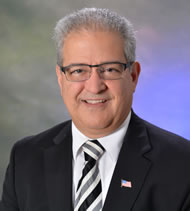When it comes to the issue of safety in schools, it is important to remember that long before the students walk the halls, a design team creates the building and its grounds, envisioning the subsequent relationships with its occupants.1 Consequently, the success or failure of a school is in many ways predisposed to the quality of its design and budget limitations.
Since the threat of unwanted intruders and inappropriate/illegal student behavior are major concerns for school boards, new ways of designing security features have come to the forefront. One is crime prevention through environmental design (CPTED), which refers to reducing the opportunity and fear of crime through the effective use and design of the built environment.
Understanding CPTED
CPTED is a powerful concept that can improve the productive use of space and help make schools safer. Architectural features, structural enhancements, and spatial definition can deter, detect, and delay potential criminals from entering school campuses and buildings. Predicting and determining the types of users to enter the space and their intended purposes is critical to designing a school with CPTED features.
School administrators and architects cannot select appropriate countermeasures unless clear objectives are identified. To be comprehensive and effective, integrated school security strategies should look at prevention, control, detection, and intervention. Threats to a school are either external (i.e. from outside influences and persons) or internal (i.e. from students, faculty, or staff, or workplace violence that can be primarily deterred through policy and procedure strategies, and management techniques).2
CPTED can make a direct impact on reducing external threats through the use of natural access control, surveillance, territoriality boundary definition, management, and maintenance strategies.
Safe school design involves four key areas that should include security layering/defensible space planning practices. These are:
- site design (e.g landscape architecture, exterior pedestrian routes, recreational areas, and vehicular routes and parking);
- building design (e.g. building organization, exterior covered corridors, points of entry, enclosed exterior spaces, ancillary buildings, walls, windows, doors, roofs, and lighting);
- interior spaces (e.g. lobby and reception areas, corridors, rest rooms, stairs and stairwells, cafeterias, and administrative areas); and
- systems and equipment (e.g. alarms and surveillance systems, fire control, HVAC and mechanical equipment, and telephone/information systems).
Evolution in school design
. . .Continue to read rest of article (PDF).
Randall Atlas, Ph.D., AIA, CPP, is a registered architect, NCARB certified, and he practices criminal justice architecture and environmental security design. Atlas is a certified protection professional (CPP) with the American Society of Industrial Security (ASIS), and is an appointed member of the ASIS Security Architecture and Engineering Committee.
©Copyright - All Rights Reserved
DO NOT REPRODUCE WITHOUT WRITTEN PERMISSION BY AUTHOR.











